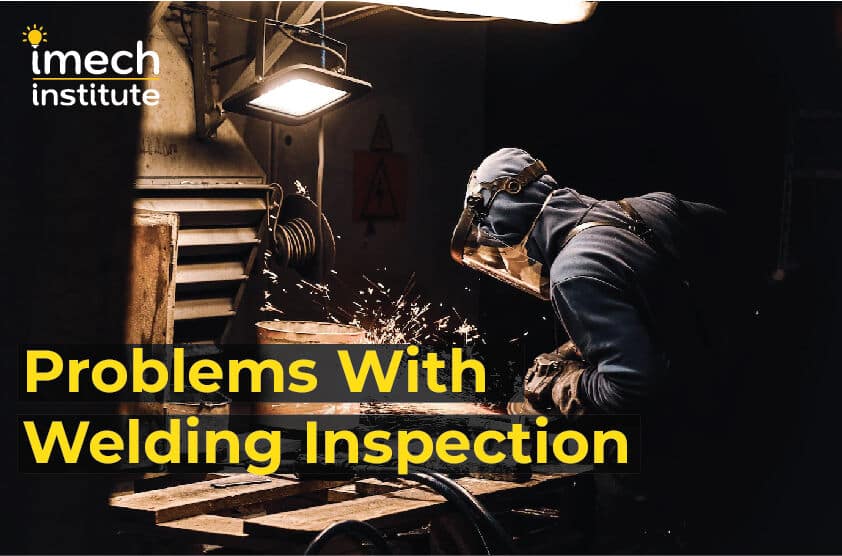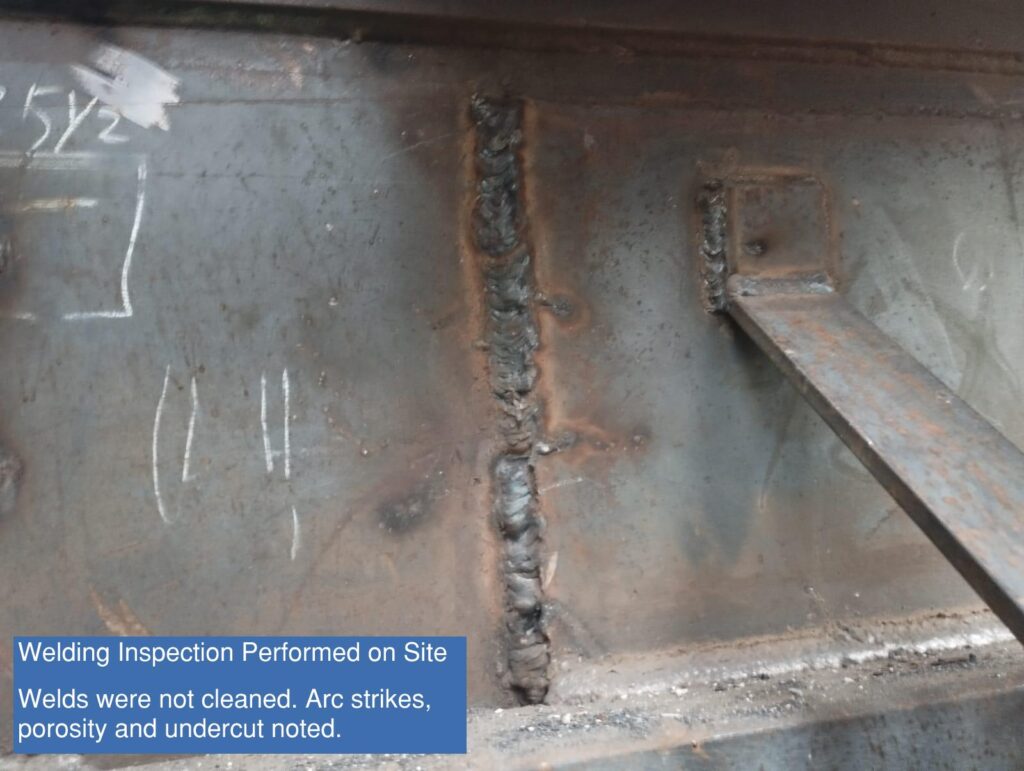Comprehending the Process of Welding Inspection Racine for Optimum Results
Comprehending the Process of Welding Inspection Racine for Optimum Results
Blog Article
Cutting-edge Methods to Fillet Weld Inspection and Screening: Enhancing Weld Quality and Compliance Specifications
In the world of welding, the top quality and honesty of fillet welds play an important role in making certain the architectural strength and reliability of numerous industrial elements. With the consistent drive for improved performance and compliance with rigorous requirements, the exploration of ingenious approaches to fillet weld examination and testing has become critical. As industries develop, the standard methods may no much longer be sufficient in fulfilling the needs of contemporary welding applications. By welcoming advanced innovations and methods, a brand-new horizon of opportunities emerges in the realm of weld high quality assessment and adherence to conformity criteria.
Advanced Non-Destructive Screening Methods
Making use of advanced modern technologies, advanced non-destructive screening approaches play a vital function in making sure the integrity and high quality of fillet welds. These approaches, such as phased array ultrasonic screening (PAUT) and magnetic bit testing (MPT), deal detailed insights into the weld's internal framework without creating any damages to the material. PAUT, for instance, uses multiple ultrasonic aspects to inspect the weld from numerous angles, giving a comprehensive visualization of possible flaws like lack of fusion or cracks.
In A Similar Way, MPT is reliable in finding surface-breaking flaws by applying a magnetic field and iron particles to the weld location. This approach is particularly helpful for identifying discontinuities that might endanger the weld's strength. By employing these sophisticated non-destructive testing methods, weld examiners can accurately examine the high quality of fillet welds, guaranteeing compliance with industry criteria and policies. The ability to spot defects early not only improves weld top quality but also stops expensive rework or failures in architectural integrity, underlining the significance of these ingenious testing strategies in welding examinations.
Robotics and Automation in Assessment
The combination of robotics and automation has transformed the inspection process for fillet welds, improving efficiency and precision in top quality assessment. Robotics provide precise control and repeatability in evaluating welds, ensuring reputable and regular outcomes. Automated systems can be set to comply with details evaluation paths, guaranteeing extensive protection of welds and decreasing the danger of human error.
Robot evaluation systems outfitted with advanced sensors can detect and measure weld features with high precision, providing thorough information for analysis. These systems can recognize issues such as fractures, absence of fusion, and porosity, enabling timely rehabilitative actions to be taken. Furthermore, robotics and automation permit real-time information collection and analysis, providing instant comments to operators and facilitating fast decision-making processes.
Moreover, the usage of robotics and automation in fillet weld examination enhances overall efficiency by minimizing examination times and increasing inspection throughput. By improving the inspection procedure, producers can make certain weld high quality and conformity criteria are met successfully, eventually bring about set you back savings and enhanced product high quality.
Utilizing Expert System for Analysis
Fabricated intelligence plays a crucial duty in enhancing the effectiveness and accuracy of evaluation in fillet weld evaluation procedures. AI formulas can swiftly refine substantial amounts of data from weld assessments, spotting problems or incongruities that might be challenging to identify with the naked eye - Welding Inspection Racine.
Additionally, AI systems can learn from previous evaluation information, continuously improving their capacity to determine prospective defects and discrepancies in fillet welds. This flexible understanding capability boosts the general quality assurance process, reducing the likelihood of human mistake and ensuring that welds meet the needed criteria. By integrating expert system into fillet weld analysis, industries can accomplish greater levels of performance, consistency, and compliance in their evaluation techniques.
Portable Equipment for On-Site Evaluation
 Enhancing area inspection performance, the fostering of portable tools changes on-site assessment processes for fillet welds. These devices provide flexibility and convenience, enabling examiners to perform complete examinations in different places, consisting of challenging or remote environments. Portable devices such as ultrasonic testing devices, magnetic fragment inspection devices, and digital radiography systems give real-time data and high-resolution imaging capacities, enabling quick decision-making and prompt comments on weld quality.
Enhancing area inspection performance, the fostering of portable tools changes on-site assessment processes for fillet welds. These devices provide flexibility and convenience, enabling examiners to perform complete examinations in different places, consisting of challenging or remote environments. Portable devices such as ultrasonic testing devices, magnetic fragment inspection devices, and digital radiography systems give real-time data and high-resolution imaging capacities, enabling quick decision-making and prompt comments on weld quality.One considerable advantage of portable tools is their ability to simplify inspection treatments, lowering downtime and boosting general efficiency. Inspectors can quickly transport these devices to various work websites, removing the demand for delivering heavy machinery or components to off-site centers. Additionally, the portability of these tools promotes cost-effectiveness by right here reducing transport expenditures and speeding up evaluation timelines.
Furthermore, the use of portable devices for on-site assessment promotes positive quality control steps, as inspectors can quickly determine and address any type of prospective welding flaws or inconsistencies. By integrating these ingenious innovations into on-site assessment methods, welding professionals can make sure compliance with industry criteria and boost weld quality, ultimately bring about enhanced structural stability and security in numerous welding applications.
Combination of Data Monitoring Systems
Having maximized on-site examination procedures with the application of portable tools, the following stage involves the smooth combination of data administration systems to additionally boost effectiveness and data analysis capacities in fillet weld evaluation and screening. Welding Inspection Racine. By integrating information administration systems right into the evaluation procedure, organizations can improve information collection, storage space, and evaluation. This integration enables for real-time tracking of weld high quality, instant recognition of defects, and prompt decision-making to correct any issues that might arise throughout the examination process
Data monitoring systems play an important function in centralizing inspection data, promoting simple accessibility for licensed personnel, and making sure data integrity and safety and security. With the combination of these systems, examiners can generate thorough records, track historical data for pattern analysis, and improve overall process efficiency. Additionally, the combination of information monitoring systems allows seamless communication between various stakeholders included in the inspection procedure, promoting collaboration and enhancing general quality assurance procedures. Eventually, the combination of information management systems serves to elevate the criteria of fillet weld examination and screening, making sure conformity with sector regulations and boosting weld high quality.
Verdict
To conclude, ingenious click resources methods to fillet weld assessment and screening have significantly boosted weld high quality and compliance criteria. Advanced non-destructive screening methods, robotics, automation, fabricated knowledge, mobile devices, and data monitoring systems have actually reinvented the method weld inspections are conducted. By utilizing these modern technologies, markets can ensure that welds satisfy the needed top quality requirements and guidelines, ultimately enhancing overall performance and safety in welding processes.

By utilizing these advanced non-destructive screening strategies, weld inspectors can precisely evaluate the top quality of fillet welds, making sure compliance with sector standards and laws. Portable tools such as ultrasonic testing tools, magnetic particle inspection tools, and digital radiography systems supply real-time information and high-resolution imaging capabilities, enabling quick decision-making and prompt responses on weld quality.
Having maximized on-site evaluation processes with the application of portable devices, the next stage involves the seamless combination of information monitoring systems to even Homepage more boost efficiency and information evaluation capabilities in fillet weld inspection and testing (Welding Inspection Racine). Eventually, the integration of data management systems serves to elevate the standards of fillet weld assessment and screening, making certain compliance with market policies and improving weld top quality
 In verdict, ingenious methods to fillet weld assessment and testing have actually dramatically enhanced weld top quality and compliance criteria.
In verdict, ingenious methods to fillet weld assessment and testing have actually dramatically enhanced weld top quality and compliance criteria.Report this page